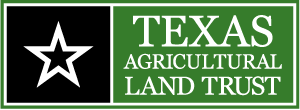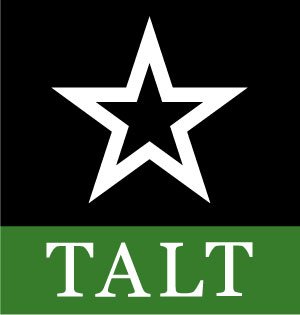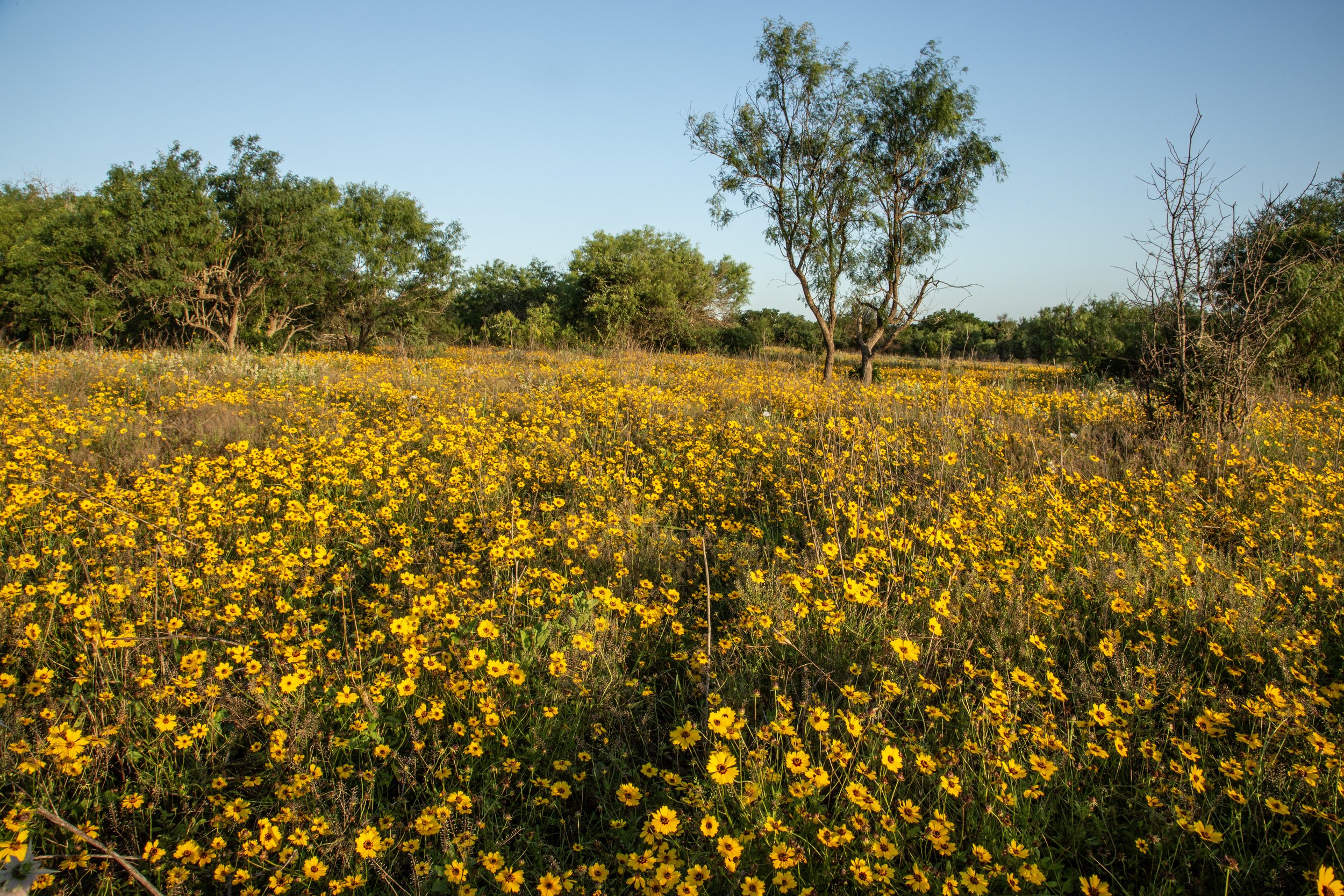Parks Ranch
David Crow is living his dream. The Corpus Christi native owns five ranches in Texas that he lovingly stewards with his son at his side as his partner.
His ranching career began in the 1970s when his wife’s father passed away and his mother-in-law asked him to help manage their family ranch. He did that while he ran his own family’s trucking and concrete company in Corpus. In 1988, a San Antonio company made him an offer on the family business that he couldn’t refuse, which provided the resources and time to pursue his passion for ranching fulltime.
He started investing in ranchland, first in Goliad and Bee counties, and then in West Texas. In 2000 a realtor asked him whether he was interested in selling one of his ranches in Goliad County because his client was looking at property to buy. David wasn’t interested in selling, and he suspected that the realtor was representing his neighbor, so he turned the tables and asked the realtor whether his client was interested in selling his ranch. The realtor told him he might be, because he was also looking at some land along the San Antonio River.
A few weeks went by, and David hadn’t heard anything, so he called the realtor and asked him to show him the ranch on the river. It was very dry on hot summer day, and David didn’t think much of the ranch at the time. However, he did notice the ranch gate wasn’t locked.
In a story he’s told many times since, he took another peek at the property when the realtor was otherwise occupied.
“The gate was unlocked, and I didn’t see a no trespassing sign, so I took another look to see the lay of the land,” David recalled with a chuckle. “I can make up my own mind without listening to a sales pitch!”
It was a dry year, and David noticed that despite that, the cattle were in good shape, and he also saw plentiful deer, turkey and quail. The abundance of wildlife impressed him enough to talk it over with his wife, and they agreed to pursue the deal.
Photos taken by Wyman Meinzer.
The ranch was owned by Richard Parks and his family, and David asked him if he would accept earnest money to take the property off the market for a month while he explored the ranch further. If he liked it, the money would go toward the purchase price, and if not, Parks would pocket the money and put it back on the market.
Over the next few weeks, David explored the ranch on horseback and on a four-wheeler. The more he saw of the ranch, the more he liked it, and the deal was done. The 4,290-acre Parks Ranch became another holding in David’s ranch portfolio.
David immediately got to work.
“The Parks family didn’t live on the property, and the ranch had been leased for hunting and cattle grazing for 27 years,” David recalled. “The roads were basically nonexistent. The land had not been abused, but it hadn’t been actively managed, either.”
Over the next two decades, the ranch was transformed under David’s careful stewardship. He first began tackling brush encroachment and the ongoing battle to control mesquite and huisache is a never ending one. David is a fan of rotational grazing, but the ranch’s classic Savory cell grazing system didn’t work well. The only thing the malfunctioning electric fences stopped was a man on horseback. There was a dearth of available water for cattle and wildlife.
Through the Coastal Prairie Conservation Initiative, a cost-share program with the U.S. Fish and Wildlife Service, the Natural Resources Conservation Service, Texas Parks and Wildlife Department and The Nature Conservancy, David installed 10 traditionally fenced barbed wire pastures, dug a deep water well for abundant water, and laid 15 miles of pipeline.
“We have about 20 troughs scattered across the ranch, and cattle don’t have to go more than a half mile to get a drink of water,” he said. “Of course, that also distributes water for wildlife, and that’s been a big benefit.”
As he began to grow the cattle operation, he also leased land for oil and gas development. Ever resourceful, he convinced the oil and gas company to build an all-weather road around the perimeter of the ranch. The old 1930s ranch house also needed some love.
“I should have just torn the house down and started over, but I was too stupid to do that,” said David ruefully. “We completely overhauled the house and then added a bunk house a few years later.”
In 2015, the house got another facelift when his daughter got married at the ranch. In 2017, the original cattle pens were replaced.
“I had been designing new pens in my mind for years, because the old ones were on their last legs,” said David. “The new ones are low stress pens for the cattle, and they turned out great. We’re very proud of them.”
David’s son, Matt, has been working with his dad on ranching operations since 2012. In 2019, he became a full partner in the ranch and now runs the cattle operation on all five ranches the family owns.
“I’m very proud of my son,” said David. “Every man should be as lucky as me to have a son that grew up in the ranching business and has a passion for it.”
David and his wife have a home in Corpus, but the Parks Ranch is the heart of the family. Besides Matt, David and his wife have three daughters and five grandchildren. The Parks Ranch is where they gather for holidays and special occasions.
“We’ve put more than 24 years into this ranch, and I don’t know how to express it other than to say it almost comes alive. It’s like a friend or family member that you are very fond of. When there are hard times like a drought, wildfire or hurricane, it’s like seeing a friend suffer,” said David. “It’s been a lot of work, and we’ve seen good times and bad, and no matter what, the land bounces back. In the last few years, I’ve been thinking a lot about how to preserve it into the future.”
David has been active in the Texas and Southwestern Cattle Raisers Association (TSCRA) for three decades. Along with the Texas Wildlife Association and the Texas Farm Bureau, TSCRA was instrumental in the creation of Texas Agricultural Land Trust (TALT) in 2007. TALT is committed to protecting Texas’ ranching heritage through many different strategies, including conservation easements. David has been involved with TALT since the beginning. He serves on TALT’s board of directors and is a past chairman and also serves on the board of the Texas Agricultural Land Trust Foundation.
“When conservation easements were first introduced, there were a lot of naysayers,” said David. “But the more you learn about them, the more you understand how they can be used to ensure that land you’ve poured your heart and soul into can be permanently protected.”
With the assistance of TALT’s land team, David worked through the details of a donated conservation easement, which closed at the end of 2024, forever protecting the land from being subdivided or developed. A majority of the associated cost of the easement was covered by the Knobloch Family Foundation, which supports the conservation of land benefiting declining grasslands and shorebirds.
“During the fight for Texas Independence in 1836, Colonel Fannin left Goliad on the orders of Sam Houston to head to Victoria,” explained David. “General Urrea was dispatched by Santa Anna to intercept them, and he caught up with Fannin’s men right here on this ranch. This is where the Battle of Goliad was fought in March 1936.”
The Goliad Massacre followed, and that horrific chapter of the Texas Revolution, on the heels of the fall of the Alamo, inflamed and unified the Texian Army on to victory at the Battel of San Jacinto.
“It would be a tragedy for this historic place to turn into a housing development or a shopping center or whatever,” said David. “That would be just wrong. My family has seen the fragmentation of land all around us, and we love this land and have taken this step to preserve it and its history forever.”
As the next chapter of the ranch unfolds, David is comforted knowing that the land will always be protected, and that the next generation of his family will love the land as much as he does.







